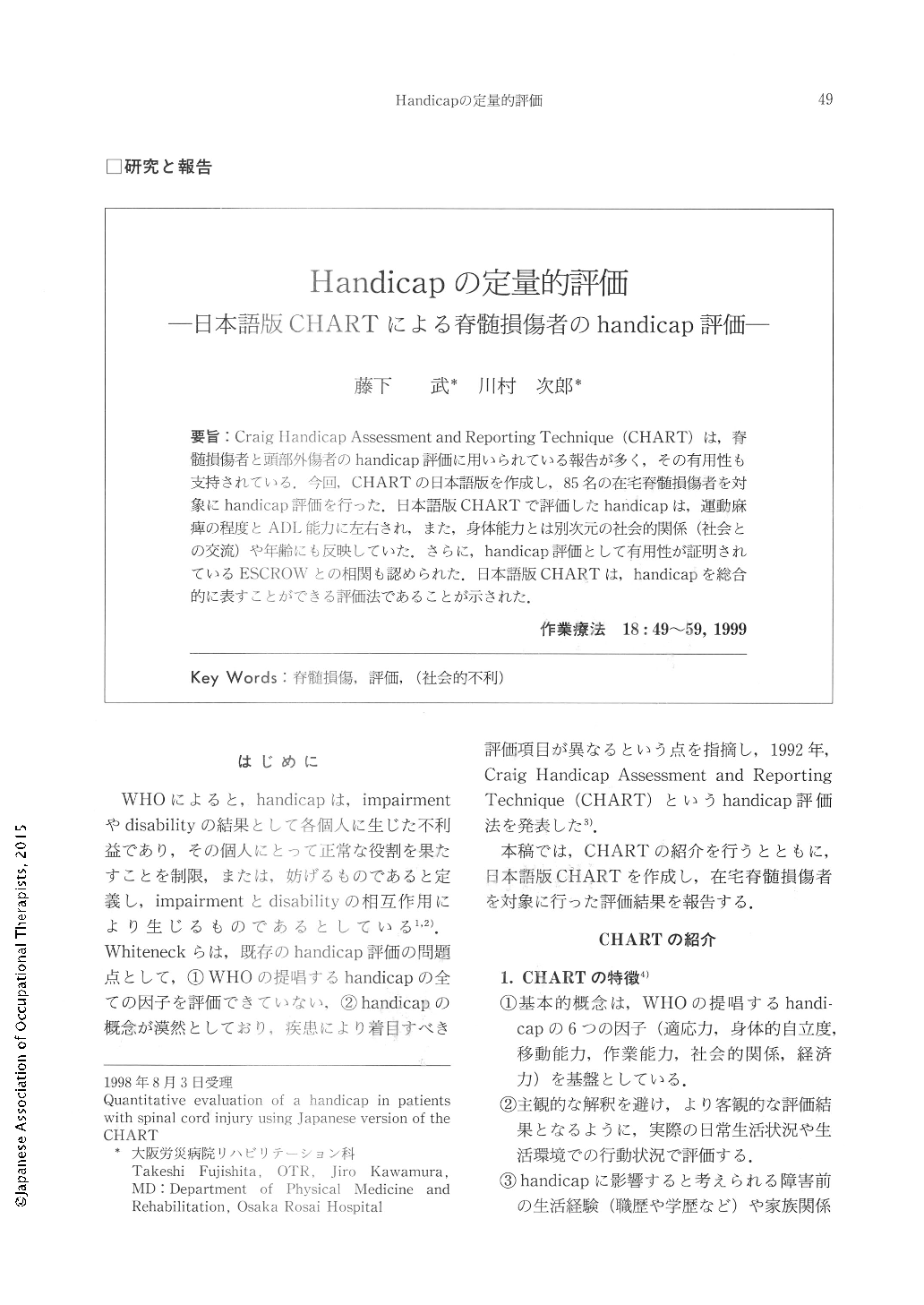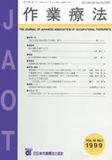Japanese
English
- 販売していません
- Abstract 文献概要
- 1ページ目 Look Inside
- 参考文献 Reference
- サイト内被引用 Cited by
要旨:Craig Handicap Assessment and Reporting Technique(CHART)は,脊髄損傷者と頭部外傷者のhandicap評価に用いられている報告が多く,その有用性も支持されている.今回,CHARTの日本語版を作成し,85名の在宅脊髄損傷者を対象にhandicap評価を行った.日本語版CHARTで評価したhandicapは,運動麻痺の程度とADL能力に左右され,また,身体能力とは別次元の社会的関係(社会との交流)や年齢にも反映していた.さらに,handicap評価として有用性が証明されているESCROWとの相関も認められた.日本語版CHARTは,handicapを総合的に表すことができる評価法であることが示された.
There are many reports on results of using the Craig Handicap Assessment and Reporting Technique (CHART) in the patients with spinal cord injury and traumatic brain injury and its usefulness as for measuring handicap quantitatively in such patients are well supported. The CHART was recently translated into Japanese. The purpose of this article is to introduce the Japanese version of the CHART (J-CHART) and to report the results of its application on the patients living in Japan.
Eighty-five patients (11 female, 74 male) with spinal cord injury living at home were assessed. We found that handicaps assessed by "J-CHART" were more severe in patients with complete quadriplegia than in patients with complete paraplegia, and also more severe in patients who were at a low level of ADL than at a high level of ADL, that is, degree of handicap assessed by the "J-CHART" was in proportion to the level of impairment and disability. "J-CHART" enabled, comprehensively, assessment of the handicap involving activities interchanged between patients and the community. Furthermore, the handicap could be assessed by the "J-CHART" as well as by other methods of measuring the handicap such as ESCROW.
We concluded that using "J-CHART" is an excellent and comprehensive method of assessing a handicap objectively and quantitatively.

Copyright © 1999, Japanese Association of Occupational Therapists. All rights reserved.


